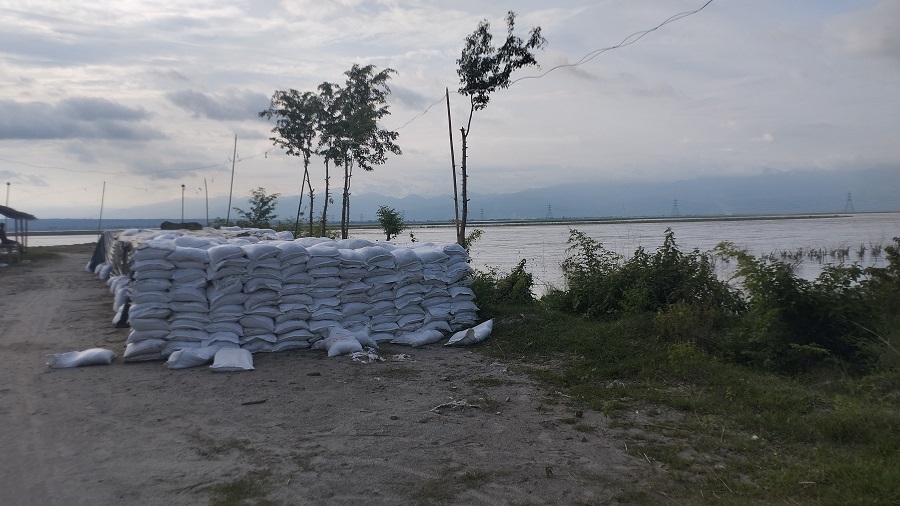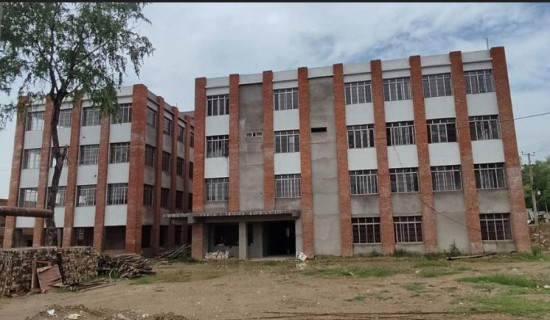- Thursday, 3 July 2025
Sandbags placed for Saptakoshi spur protection
By Baburam Karki,Barahakshetra, July 3: To immediately prevent erosion caused by the Saptakoshi River, sand-filled bags have been kept ready along the river’s spurs. These sandbags have been placed along the eastern embankment of the Saptakoshi, from Kushaha and Madhuvan to Chatara, for the protection of the spurs.
Thousands of bags filled with soil and sand, along with net and other materials, have been kept on standby to prevent erosion of the embankment during the monsoon floods, according to Chaitanya Prasad Sitoula, Liaison and Land Acquisition Officer of the Koshi Project, Biratnagar.
He said the river's strong currents tend to erode the eastern embankment area, which is why the sandbags have been prepared in advance.
The Rajabas Sub-Division Office under India’s Water Resources Department has also stored sandbags along the embankment as a precaution, considering the risk of erosion by the Saptakoshi River during the monsoon. These measures aim to prevent damage to the spurs under water pressure.
Sandbags have been kept ready along the spurs from western Kushaha, through the northern boundary of Koshi Tappu Wildlife Reserve via Dharahara Tapan, Rajabas, Salbandi, Shukrabare, Thakubari and Chatara.
Local Mohan Mandal, who has long been involved in embankment maintenance, said that if erosion occurs, the sandbags are filled inside nylon mesh and placed at the eroded spots.
He added, "Depending on the situation, we also use stone mesh along with the sandbags."
The Koshi Project Liaison and Land Acquisition Office, Biratnagar, informed that every monsoon, sandbags, stones, soil, sand and porcupine wire are kept ready along the spurs, where the risk of erosion is higher.
To minimise possible river damage, India’s Water Resources Department deploys senior technical staff along the eastern embankment with the necessary materials every year before the monsoon.
It is reported that spurs numbered 25:57, 25:25, 26:00, 26:40, 26:88 along the eastern embankment experience the most water pressure. In particular, the seven spurs in Rajabas area, from 24:10 to 27:88, face the greatest water pressure during the monsoon, so extra monitoring is maintained there.
Indian technical teams from the Water Resources Department also conduct round-the-clock surveillance along the spurs and embankments from Koshi Barrage to Chatara throughout the monsoon.
To control erosion at the spurs, the Kushaha, Madhuvan, Rajabas, Chakraghatti and Chatara Sub-Divisions under the Koshi Project carry out daily monitoring of the river’s condition and repair work along the embankments and spurs.
















